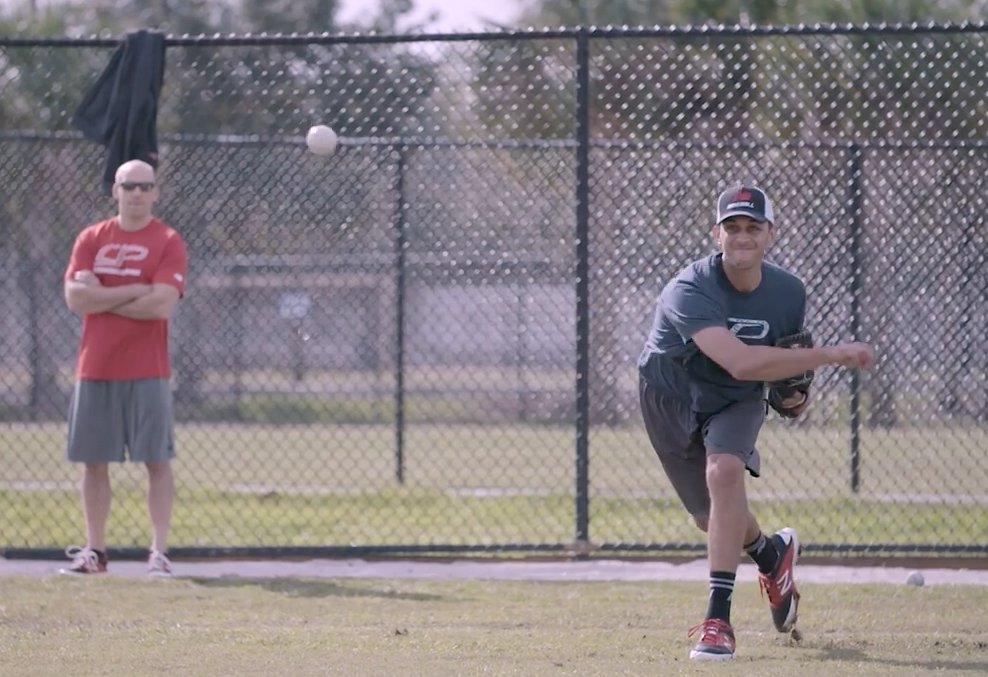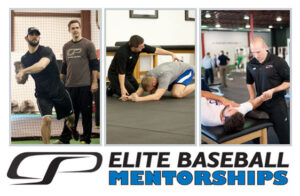
5 Steps to Becoming a Baseball Specialist
Today’s guest post comes from physical therapist, Eric Schoenberg. Eric is an integral part of the Elite Baseball Mentorships team.

A thought came to mind as I was considering how we can work towards reducing the incidence of injury in baseball: we need more specialists.
If we use the field of medicine as a model, the Total Knee Replacement has pretty much been mastered. Of course, there is room for improvement, but over the past 25 years, this surgery has become a massive success. The biggest reason for this is a progression of specialization:
MD > Orthopedist > Orthopedic Surgeon > Knee Specialist > Total Knee Replacement (TKR) Specialist
If you need a knee replacement, you don’t go to your primary care physician. Instead, you schedule an appointment with an Orthopedic Surgeon that specializes in TKR. So, if you are a baseball player, why does it make sense to work with a “general” strength coach or physical therapist?[bctt tweet=”Every profession matures into a state of “super-specialization” as it develops.”]
Strength coaches and physical therapists have a great opportunity ahead of us to move our professions forward in this manner.
The current entry point for a strength coach is minimal. Most commonly, entry into the field falls somewhere between a fitness certification and a 4-year degree. In some cases, you will see dual degrees, Master’s degrees, and the occasional PhD.
However, there is no direct path available to niche into a “baseball specialist.” Instead, we have private sector, college, and even some professional strength coaches that may have seen baseball players by chance, but have no more experience with them than any other sport. It’s not a criticism of them, though; there simply isn’t an established “curriculum” they can pursue. As a result, in most cases, highly “specialized” baseball players are being managed by “general” strength coaches.
I have to believe that this is as much of a contributing factor as any to the high incidence of injury in the baseball world. By the time these athletes make it far enough in their careers to have access to “baseball specialists,” they are often too damaged for even the experts to manage.
Here are five tips to establish yourself as a trusted resource in the baseball community:
1. Watch baseball.
Don’t just watch it for entertainment value. Study the movements. Use slow motion and rewind on your TV. Watch video online and gain a better understanding of the actions and positions unique to the sport. Once you think you have it figured out, you are only just scratching the surface. Keep studying! Start to recognize why faulty mechanics can lead to improper distribution of stress and ultimately injury. By doing this, you can pair this knowledge with your individual assessment of the athlete to create a more optimal training program.

2. Spend time on a field.
Baseball players are unique in their habits and tendencies. Gain a “feel” for the game. Understand the culture of the game. Learn how to identify with and communicate with athletes that are much younger than you. Understand that most of their time on the field is spent standing around and waiting. Educate your players on how to optimize this time to prepare mentally, hydrate, properly warm up, etc. It is not enough to say you used to play baseball 20 years ago; nobody cares. My credibility and effectiveness in managing baseball players increased 10x once I started spending time at the field as part of a team. Create an angle to quickly establish trust and common ground with the athlete and watch your results dramatically improve.
3. Understand the unique physical characteristics and demands of baseball players.
Baseball players have physical characteristics that differ from other sports. Educate yourself for the benefit of your athletes. Learn about humeral retroversion, gross extension patterns, laxity, valgus stress, dynamic stability, rotator cuff timing, etc. Work towards understanding the importance of stability of the landing leg, proper hip hinge pattern, and the importance of tri-planar single leg balance. Don’t “stretch” a guy that is already too loose. Instead, give him some stability and watch his pain go away. The baseball player’s anatomy is a long way from “neutral.” Do your best to bring them closer to the middle and not further away. For example, your ability to recognize that a baseball player should not be cued to pull their shoulder blades “down and back” because their shoulder blades are ALREADY down and back may save dozens of careers.

4. Master functional anatomy and human movement.
Understand the critical role of the scapula. Train the rotator cuff in the throwing position through the entire range of motion (especially end-range external rotation). Learn how the kinetic chain applies specifically to baseball. Hitting and throwing are highly coordinated, precisely timed, multidirectional movements. Don’t train your athletes with single joint exercises that only occur in the sagittal plane. Learn about hip/trunk separation to maximize power and explosiveness. Be able to educate the athlete on what it means to have a labral tear or understand the specifics of an ulnar nerve transposition. If you can’t explain these pathologies, then how can you minimize risk when working with these athletes? Take pride in your job on this front.
5. Be willing to respectfully challenge the “institution of baseball.”
CSP coach Tony Bonvechio wrote a blog post a while back where he warned about the dangers of the phrase “this is how I’ve always done it.” I find myself observing on a daily basis that regardless of level – little league, high school, college, pro ball – at least 80% of the player’s warm up routine is exactly the same. How can that be? We have progressed as a profession; however, kids on baseball fields across the world are all doing the same useless warm-up routine.
An example of progress is Joe Maddon and the Chicago Cubs. He softened the traditional stance of getting to the ballpark at 1pm for a 7pm game. Instead, they have created a culture that emphasizes more sleep, nutrition, and recovery and his players love him for it.
If we want different results, we have to continue to move towards a different approach. The efforts of strength coaches and physical therapists to move towards becoming baseball specialists will go a long way in helping to reach this goal.


